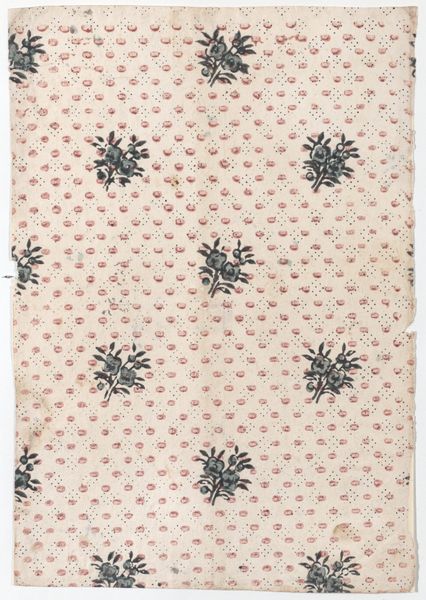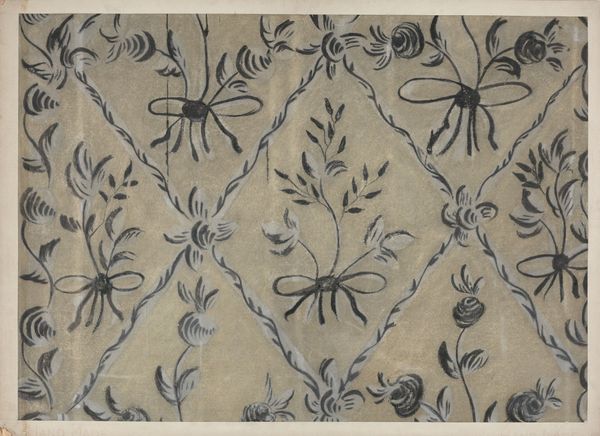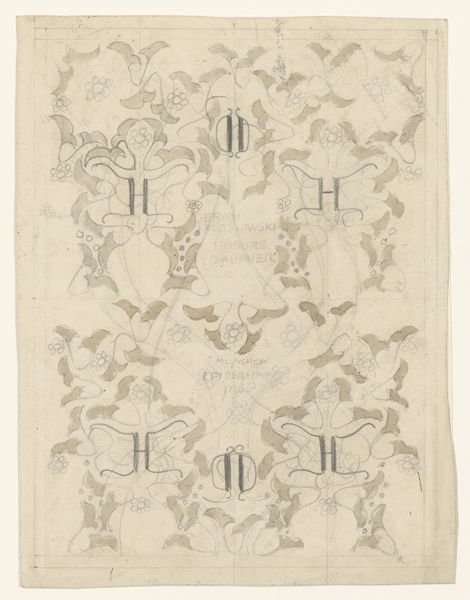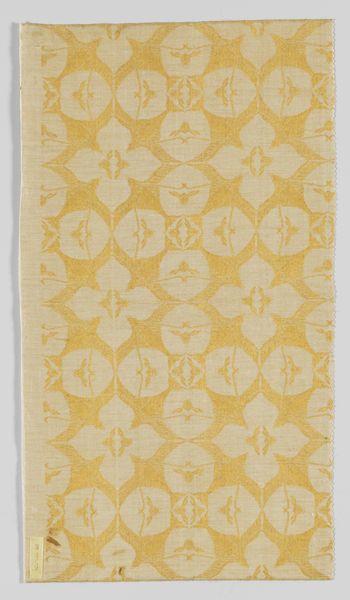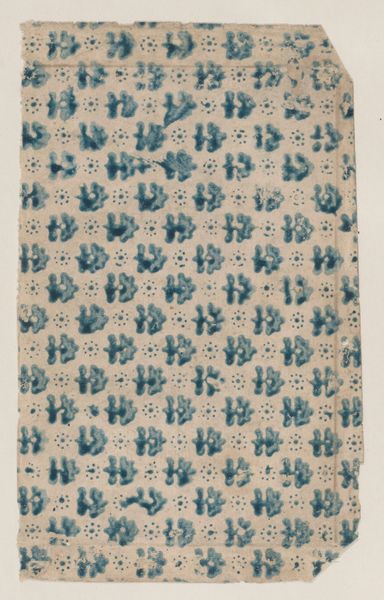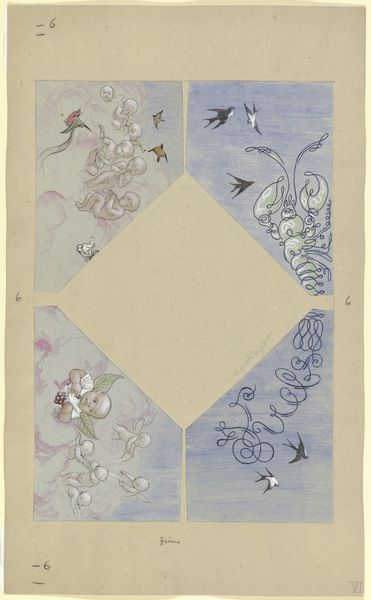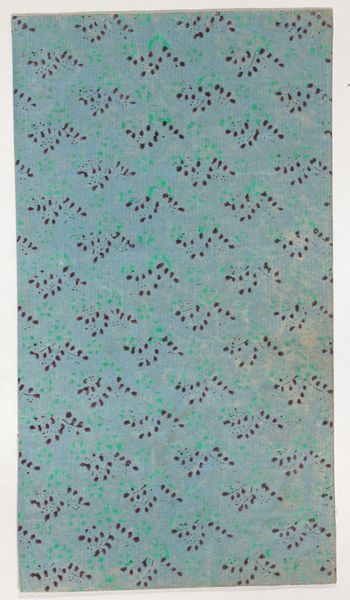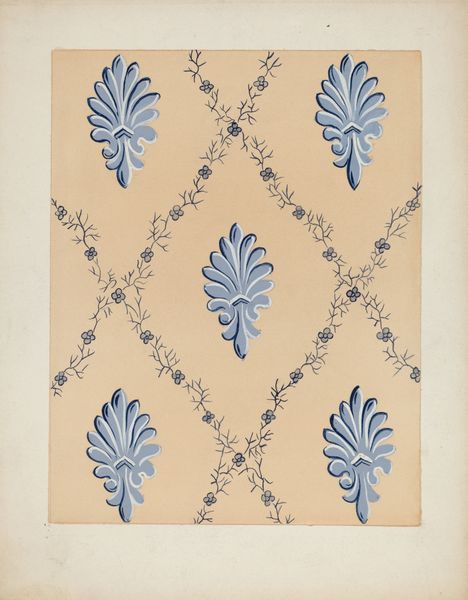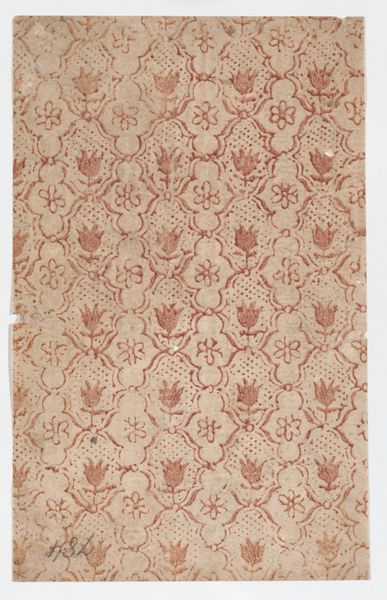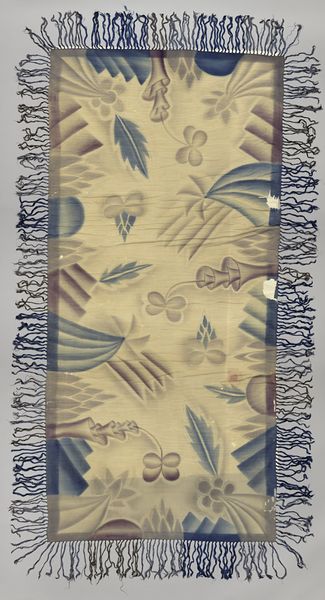
graphic-art, print, paper
#
graphic-art
#
water colours
# print
#
paper
#
watercolor
Dimensions: height 251 mm, width 179 mm
Copyright: Rijks Museum: Open Domain
Editor: Here we have "Pattern with Crane Flies", made around 1895 with watercolor on paper. It is quite a simple pattern; at first, I found it rather…mundane, I suppose? I'm curious what your take is. What do you see in this piece? Curator: Beyond the immediately visible image, I see a work deeply engaged with the artistic trends and social realities of its time. Japonisme was more than just aesthetic appropriation. Here, the watercolor medium and the motif itself - likely intended for textile design - suggest an exploration of democratizing art. How does this repetitive pattern challenge the notion of unique artwork, precious objects versus mass production? Editor: I guess I never thought about it like that. I was so focused on the subject matter. The crane flies, though, isn’t it unusual? Curator: Precisely! Think about the materials involved. Watercolor, paper - these are accessible. Why crane flies, a common, perhaps even 'lowly,' subject, rather than traditionally beautiful motifs? What kind of market or social group was the artist intending his art to reach by designing pattern based around a commonplace insect? It defies the tradition of ‘high art’ by integrating itself into the realm of the functional. Editor: So you think that choosing something so accessible points toward a different kind of audience? Curator: Exactly! Perhaps de Vries envisioned these designs printed onto textiles available for everyday use, thus placing art within the reach of more people, into their homes. Considering this, the ‘ordinariness’ transforms into a powerful statement of intent, challenging the boundaries of art, design and consumption. What do you think now? Editor: That’s so interesting! Looking at the materials and potential purpose transforms my understanding. Now, I find myself admiring its democratic accessibility! Curator: Indeed, it's a reminder to analyze not just the subject, but how the materials and mode of production relate to the broader social context. A good exercise for a budding Materialist.
Comments
No comments
Be the first to comment and join the conversation on the ultimate creative platform.
